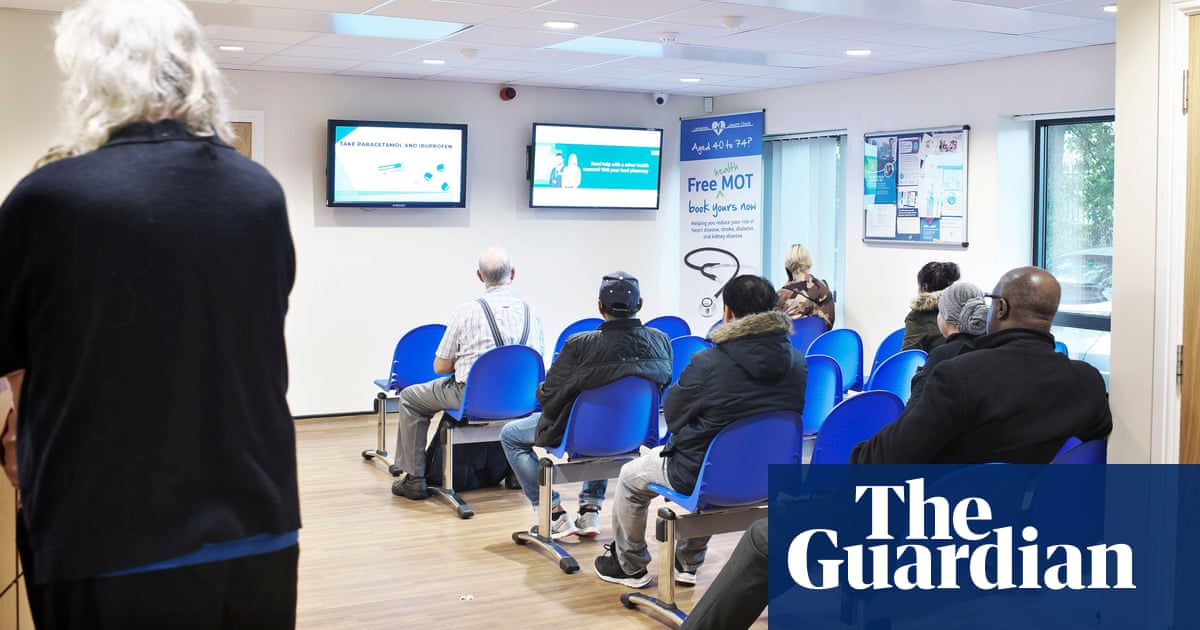
The NHS is struggling to cope with growing demand for urgent and emergency care, health officials have warned, with hospitals under the kind of pressure “usually seen at the height of winter”.
A&E units across the UK are so crowded that 50% are being forced to hold sick patients outside or turn ambulances away every day, Britain’s top emergency doctor told the Guardian. The figure is the highest ever recorded; it was 27% in October 2020 and 17% in March this year.
Half of casualty wards were also having to treat patients in corridors every day, added Dr Katherine Henderson, the president of the Royal College of Emergency Medicine, which carried out the survey. The proportion was 17% in October 2020 and 14% in March this year.
As a result, patients in some emergency departments were having to wait more than 48 hours for a bed, with hospitals across the country seeing unprecedented levels of demand, Henderson warned.
The Guardian can also disclose that a hospital trust had to cancel non-urgent operations this week and declare an internal critical incident. In a message to staff on Monday, Tracy Bullock, the chief executive of University Hospitals of North Midlands NHS trust, said that as a result of “unprecedented pressures” on its hospitals in Stoke and Stafford, “we have made the extraordinary decision to cancel all non-urgent operations for two weeks”.
As well as typical A&E cases such as car accidents and heart attacks returning to pre-pandemic levels, emergency doctors were seeing four new groups of patients, Henderson said.
They included patients who had missed out on treatment for 18 months during the pandemic and had become seriously ill, and people on elective treatment lists who were “stressed and fed up with waiting” as their condition deteriorated.
There had also been a significant increase in mental health admissions to A&E, particularly among young people, she said, as well as children presenting with viral infections “whose parents have maybe never experienced their young child being unwell because they’ve been in lockdown”.
The soaring numbers of patients in A&E – coupled with Covid distancing measures that reduce capacity – mean ambulances arriving at emergency departments with critically ill patients are finding there is “literally no room in the inn”.
“This is a disaster,” Henderson said. “This is a system that is on the edge.”
The NHS was short of 15,000 beds it needed to cope with the number of emergency care admissions, she said, adding that the crisis would inevitably lead to an increase in deaths.
Sajid Javid, the health secretary, said this month that pressure on A&Es and increasing hospital admissions could trigger the government’s “plan B” for tackling Covid. However, he declined to put a number on how many cases or admissions.
More than 7,500 people are in hospital with Covid in the UK, compared with a peak of nearly 40,000 in January.
A combination of Covid, demand for other care and staff shortages is undermining the NHS’s drive to tackle the huge backlog of people waiting hospital treatment, which stands at a record 5.61 million.
“Planned surgery is being disrupted in hospitals in some parts of the country, due to a mix of pressures hitting the NHS, and local infrastructure and staffing shortages,” said Prof Neil Mortensen, the president of the Royal College of Surgeons. “Hospitals need to make plans now, creating surgical hubs and increasing bed capacity, to avert widespread cancellations of operations.”
Doctors who spoke to the Guardian privately said NHS personnel shortages were worse than usual because of staff sickness and frontline workers quitting for a less stressful life.
One lung specialist said: “I’ve never seen staffing be so consistently bad. It’s a combination of Brexit, people quitting and sickness, including lots of colleagues off with long Covid and also those who are isolating.”
One children’s intensive care doctor said nine specialist nurses had quit their paediatric ICU since Covid unfolded and none had yet been replaced because of recruitment difficulties. Six had moved to new jobs in less stressful nursing posts outside the hospital, the medic added.
Earlier this week, surgeons and anaesthetists at University Hospitals Sussex NHS trust wrote to its chief executive to warn that patients were being put at risk because of a lack of staff. In the letter, first reported by the Health Service Journal, they said some patients who needed to undergo an urgent repair to an aneurysm – a swelling in an artery that can prove fatal – and cancer surgery had had operations cancelled three times.
“It’s all too evident from our daily conversations with trust leaders that urgent and emergency care services are under severe pressure,” said Saffron Cordery, the deputy chief executive of NHS Providers, which represents NHS trusts in England.
“We are seeing levels of demand usually seen at the height of winter: demand for ambulance services is rocketing and increasing numbers of patients are waiting longer than 12 hours to be admitted. No one should be under any illusions about the scale of the task we face in the months ahead.”
An NHS spokesperson said: “While hospitals have had to contend with one of the busiest summers ever with 2.9m A&E attendances in June and July, NHS staff have continued to go above and beyond to provide care for patients. The NHS has also set out a 10-point action plan to support local areas with the significant demand so anyone who needs the NHS should come forward through NHS 111 Online so staff can help you with the best option for your care.”












